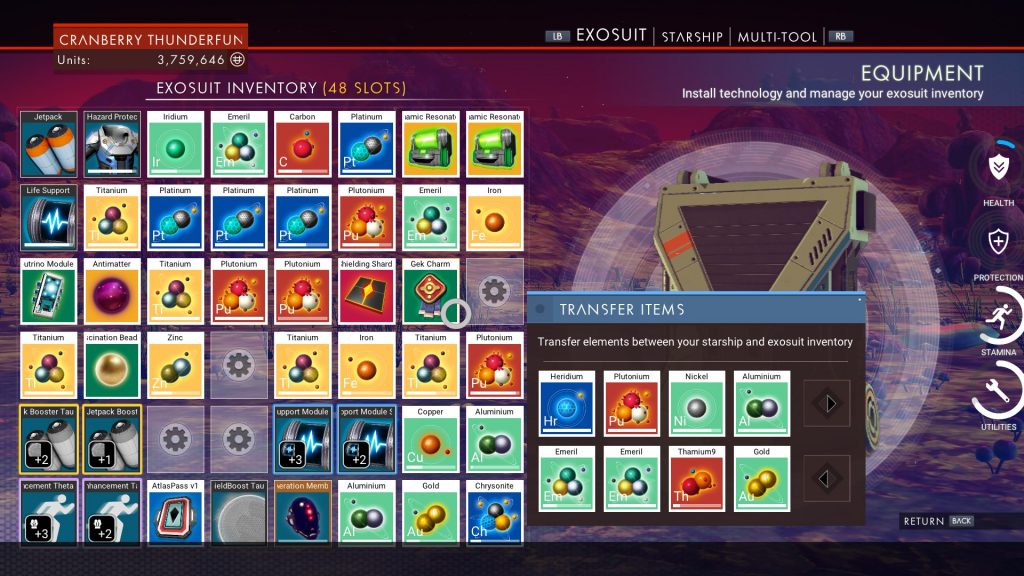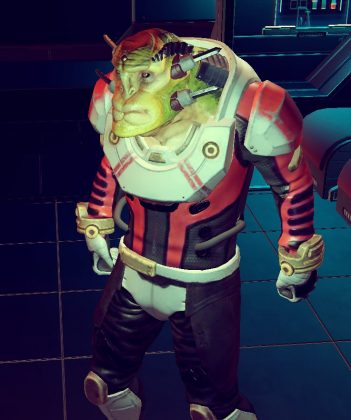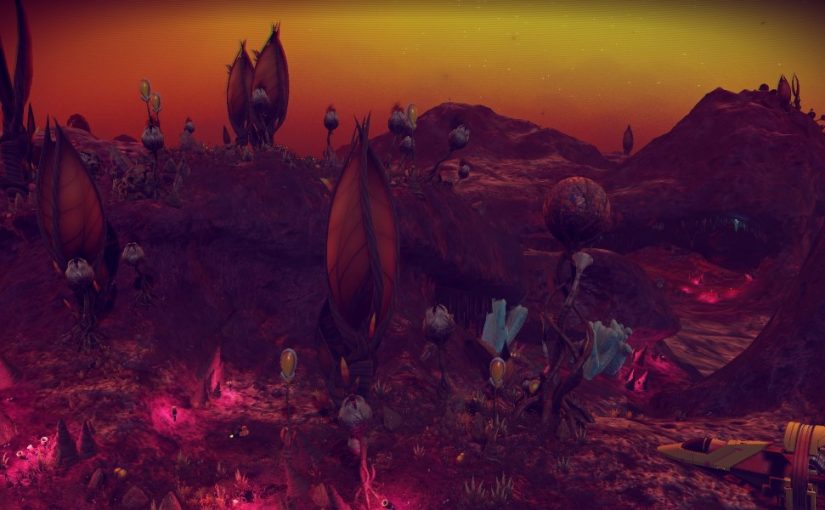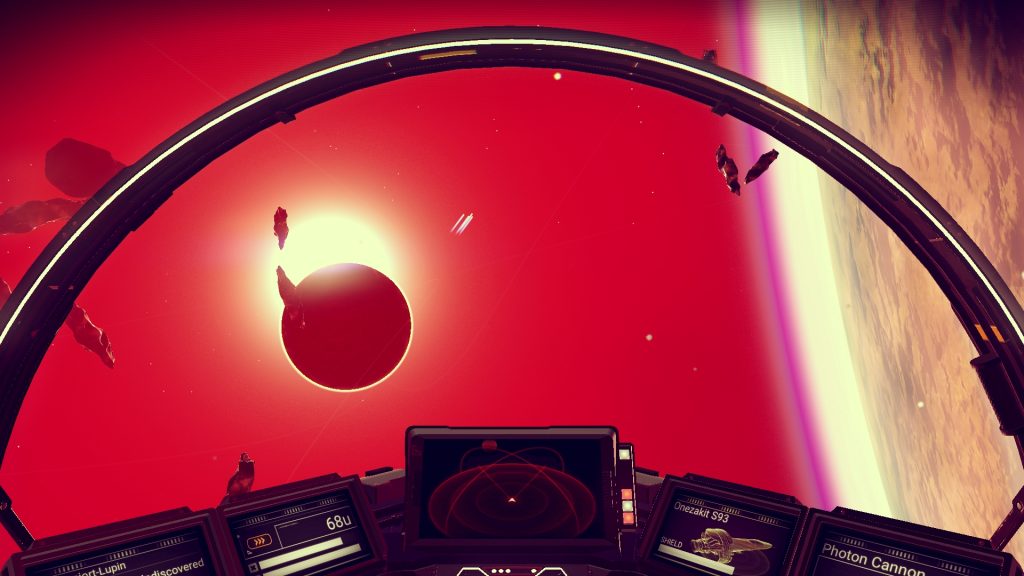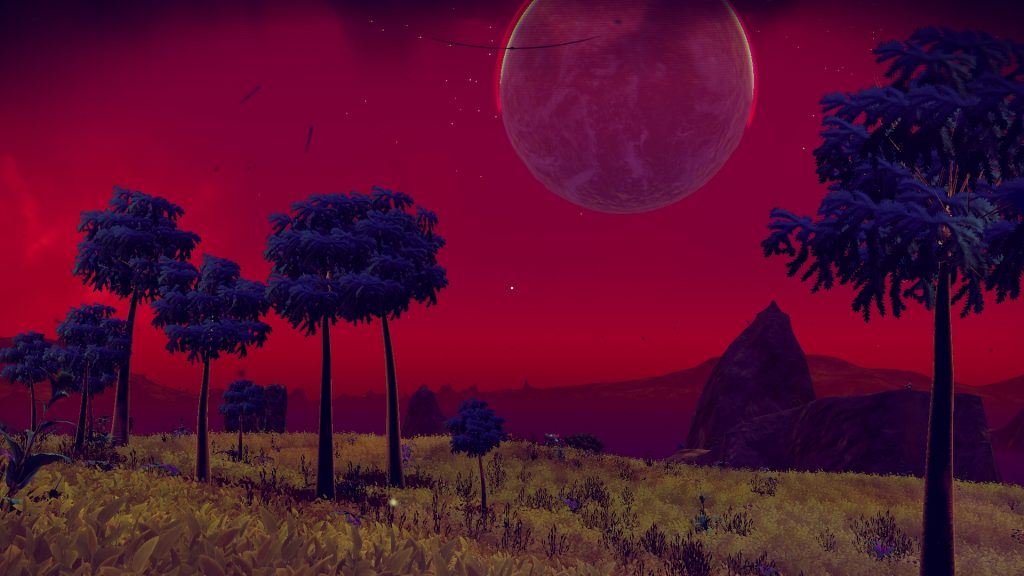My reflections on Fable: was it worth the wait, the hype, and all that jazz?
EDIT: You better appreciate this. It took me two hours. Enjoy all 6 pages, 20 paragraphs, 232 lines, 3,730 words, 20,627 characters of it. Enjoy it, or you owe me two hours of my life back.
I blabbed to you people about Fable for nearly a week in a row a month ago, and now that I have it, I’ve beaten it, and am already halfway through the game again, (I’ve spent almost 30 hours on the game thus far, I’m sure I’ll suck more out of it) I’m pretty sure I can give some accurate reflections on how the game really came out. When I first played the game I didn’t see the problems I had as the fault of the developer (Big Blue Box), but as I progress, I’m seeing more and more that really just seems like they spent too much time on parts that need not be attended to. The general feel you get when playing in Fable is that of being a hero. They accomplished that – you do feel like you’re controlling a hero that you’ve formed and created, however, it’s what you can do with that hero that really matters. I’m gonna make this easy to understand by using bullets. All the positive points I have about the game will be +, and yeah, you get the idea.
+ Character Customization (Clothing): It’s very apparent that they spent an enormous amount of time on this – and I’m glad they did. Your character has a choice between 23 different suits of clothing – and they all look significantly different. If you wanted to be picky, you might say there were only 6-7 suits of clothing. This is because there are always three variants of one model of clothing. Example: Chain-mail has a normal set of armor, and then a bright set, and a dark set. These bright and dark sets have differing modifiers to attractiveness, scariness, and alignment. The coloring is much different, but, the model is still the same. However, the coloring is different enough (to me) not to worry about that. The thing that astounds me about all the clothing is that everything but three suits (plate-mail) has perfect collision detection – there are no visible errors or clashes with collisions between your weapons, body and armor.
– Character Customization (Weapons): I was rather dissapointed in this category. The weapon types are rather basic, and the sheer number of weapons is very small. They made approximately 50 different weapons – in total, no more. There were a few levels of weapons which were simple and nondescript. Iron < style=”font-style: italic;”>liked about the weapons was augmenting. You could find or buy gems to augment into your weapon to produce a certain ability, most of which were fairly basic. There were fire, lightning and silver augmentations (no need to explain, RIGHT?) as well was sharpening, piercing , mana, health, and experience. Sharpening just increased basic damage, piercing reduced your enemy’s armor effectiveness, mana continually restored mana, health did the same, experience increased your experience intake. Kinda cool, but all weapons have a limit on how much you can augment (the best weapons had a max of 3 augmentations, and the legendary weapons were already augmented). Augmented weapons would glow and glitter based on what you augmented into them. Arrows would also reflect the augmentation, which was cool to watch in first person.
+/- Character Customization (Appearance): This was one of the prime features presented when the game was in early development – you could go to a barber and get a haircut, get a mustache, or a beard, as well as get tattoos from a tattooist, either on your leg, arm, chest, back, or head. Each barber or tattooist has a basic set of tattoos or haircuts they can give you (around 8 or so), and if you want more, you have to find barber or tattoo “cards”. Finding these cards allows you to get the specified tattoo/haircut from any barber or tattooist. It’s not a bad idea, it just doesn’t really make sense. It would really be much cooler just to be able to have the entire list at the beginning of the game. I believe I’ve found all the haircut cards, and there are approximately 7-8 mustache cuts, 7-8 beards, and 11-12 haircuts. The tattoo selection isn’t as good – probably 4-5 arm, 4-5 leg, 7-8 face, 9-10 chest, and 9-10 back. Considering tattoos have much greater room for creativity, I would expect at least twice that amount. I wasn’t terribly found of the majority of the tattoos, I only liked 3 or 4 enough to ever apply them. I suppose also fitting into this category are scars. If you are hit, you will develop a scar, which reduces attractiveness and increases scariness. This is a fun addition – it’s cool to see how well your skills have maintained your character. I am not sure whether scars reflect actual hits, or just area of strike. Age also plays a big factor. As you grow older, your hair may grow gray or white, and your skin will wrinkle. Being a heavy magic user will cause your hair to gray or whiten much faster, or investing a lot into strength abilities will cause you to become taller, more muscular, and hairier. Skill abilities will cause you to become more lithe and agile. Its all in how you play, and that’s the part I like most about appearance.
+/- Character Customization (Alignment + Renown): The cornerstone of what made Fable so famous in the first place, it came under very heavy scrutiny, and it sort of held up. It depends on what you’re looking for. The good and evil system is fun and well-done. You gain evil points by killing innocents, stealing, breaking doors and windows, and certain plot elements give you a choice between good and evil acts. You can also donate to the evil temple by sending them sacrifices of blood! Good acts are mostly just killing enemies – I don’t know of any other way to become good, besides donating to the good temple with lots of money! I think they could have been a little more creative, but it’s not a big deal. People will react to you different based on alignment – they won’t necessarily fear you if you’re evil, or love you if you’re good. But if you’re good, you’ll receive comments like “I wish everyone were like you!” or they might clip and whistle for you. If you’re evil, people might cringe and go” Eww!”, (all depending on attractiveness and scariness, still) or run away, or scream, it’s all pretty cool. Some reactions are a little over-used, but I suppose If I don’t change alignment for two days of playing and wear the same clothes, too, I shouldn’t really expect much else. Renown is based largely upon quests. Renown isn’t changed by alignment – people know you or they don’t. Unfortunately, I never noticed a real change in reactions as I became more renowned with my first character. You initial status is “unknown”, and after a while rises to “familiar” then to “well-known” “famous” and so on. With my second character, I noticed many audible changes in reactions to me as I grew more famous – people would call out my name (well, my title, at least. you cannot have a name, only a title, which I chose to be Piemaster) and randomly clap, it was rather satisfying. You can boost renown by showing off trophies you gain from quests. However, both systems were rather shallow. They didn’t really change much, and renown was easily maxed before the end of the game. Even though I played through the game as evil as possible, I could donate enough to the temple and because a saint. What’s with that?! It would be one the if I could somewhat change my alignment, but there should be a limit, considering I killed my OWN SISTER so I could rule the world. Oh well.
+ Character Customization (Leveling Up): The system for leveling up in Fable was extremely well done. It’s definitely a different system. There are 4 categories in which you have experience – General, Strength, Skill, and Will. Any time you kill an enemy, it drops General experience. Strength, Skill, and Will are gained by using skills specific to each category. For example, using a sword will give you strength experience each time you hit the enemy, because melee attacks are under the strength category. When you want to level a skill up, it uses its specific category first, and then uses up the reserve of general experience. This really makes it easier to make a less-specific character. Personally, I prefer to make Strong, Agile heroes, so I’d invest in Strength and Skill, and this system lets me do that easily. All the different skills you can get from each category are well made – the spells for Will even have a visual demonstration of what you’ll get. Overall a solid system. Unfortunately there are level caps, so that prevents truly area-specific heroes.
– Mobility: This is probably my greatest grief with the game. You just don’t have mobility. If you’ve ever played ANY Zelda at all, you know that you have a lot of room to breathe and explore – it’s a part of what makes it fun and replayable. The problem with Fable is that you don’t have a choice in how you go about getting to where you want to go. At best, your choice is a) go around the left side of the rock or b) go around the right side of the rock. It’s not an exaggeration. The towns are not quite this constrained, but I often find myself sighing as I cannot explore. My nature is to go check every nook and cranny for a chest or item or whatever you please, but you really can’t explore. I can probably guess at the reason they did this – the graphical quality was too high. I’ll get to that in a minute, but they could only make the area so big or the framerate would drop. Back to the point – there’s also an excessive amount of loading times. Notice I said loading times, not loading time. The loading times in themselves are short – never more than 10 seconds. However, they are very common. If you decided to run from one end of the world to the other, I count at least 15 loads, possibly more. This is why they created teleporters from town to town, but, that sort of takes away from the feel of being in a living, breathing world. The only plus side for mobility I can mention is the speed at which you run – they allow you to run at a rather brisk pace, so you don’t have to snore as your character runs from one end of town to the other. Rather refreshing, but definitely does not cover for the loading times and strict borders.
– Quests/Storyline: This is a major pitfall in how the game feels. The plot is very….uninvolving, uninteresting, uncreative, it really just doesn’t suck you in like the rest of Fable can. The plot (don’t yell at me for spoilers, ok?) is about, well, you. You start off with your home and village burned, and you’re rescued and taken to the Heroes Guild for training. Once done, you go out into the world and discover your sister is alive, and that she’s a seeress, and had her eyes cut out when your town was burned. You then discover that your mother is alive, so you set out to rescue her (no choices here, for some reason) and you get captured (no choice again) and the only way to get out is to steal a key from the warden (woo for lack of choices) and then you set out again to stop the evil dude who imprisoned you, and you race around the world stopping him from activating these “focus” sights (which were never mentioned before, you saw them, they just looked like ruins, really kinda random) and you fail (guess what, no choice!) and then you chase him until he kills your mother (guess what I’m thinking!) and you kill him and then FINALLY you get a choice – you take the uber powerful sword and kill your sister….or throw it into a vortex randomly created by the dude you killed. Now remember in all of this you never get a valid reason from the dude as to why he wants the world to burn and have a lack of living things on it, he just does it. Overall, a boring and not well thought-out plot. As for the quests themselves, they’re not as bad as the plot. You have an option of “boasting” on most quests, which makes them slightly harder but gets you more renown and money, if you accomplish them. Most boasts are either too easy or too hard. There’s always two or three that are available for any mission, these being “Fist Fighter” (fight with just fists and no aggressive spells), “No Protection” (do the quest naked), and “Without a Scratch” (never get hurt), none of which are fun or interesting. There’s usually 1 or 2 others which are easy to accomplish. In total there’s between 40-60 quests, it really depends on what you count. There are about 15 main quests (AKA “gold” quests)which are all plot involved, and then about 20-25 side quests (AKA “silver” quests)which you can do whenever you please – most of which are more fun than the main quests. There is a final branch of quests which are found by talking to people throughout the game, things like finding a hidden treasure, completing various tasks to marry a mayor, and these are “bronze” quests. They do not significantly boost renown or money and cannot be boasted. They are mostly what you do at the end of the game – there are about 10-15 of these. With all these quests alone there’s easily 40 of them, so I don’t understand where some reviewers get the number 30 from. My approximate guess is 50, but I would add a few quests they didn’t directly list (like finding “demon doors” and unlocking the silver chests, minute stuff like that, that when added together forms a sizable task as a quest). But I degress. Quests are all handled by going to the Heroes Guild and getting Quest Cards. Kind of akward, as there’s supposed to be this dire situation, and you have to go back and grab this card…very weird. Could have been handled much better. The quests are fun, and since there’s approximately 50 (to elaborate again, by my standards, if you did all 50, you would be 100% done with the game and nothing more could be done at all to further or advance your character in any way shape or form, so, yeah) you can have a good amount of entertainment. Not to my satisfaction though.
+ Visuals/Audio: The game is simply beautiful – you can’t top the graphical quality you’ll see in Fable. As I mentioned earlier with collision detections – they did a tremendous job on that. The lighting is astounding, the world is just a sight for sore eyes. However, I feel that this beauty is the cause of restricted environments. Personally, I’ll take a crappy generic ground texture for some room to explore over a beautiful, linear…path. At this rate, games will end up being a box. It will be the most beautiful box you’ve ever seen! You can do anything at all in this box, anything you can think of, except, well, leave it. We obviously won’t ever reach that point with games, but, I’ll still take expanse over restriction any day. As for the frame rate, it ran rather well. (My guess is about 35 FPS) The only noticeable drops were before and after load points, cut scenes, basically anything that switched from standard view. There was also one point where there were 15 people on the screen, it dropped to about 10 FPS there. Beyond that, it was solid. As for the audio – equally astounding. The ambience is just jaw dropping at some points. The music is very pleasant, I’ve found myself stopping and just listening to it once or twice, and fits the feel of the game very nicely. The voice acting is surprisingly well done – at least, all those outside of the cutscenes. (I found all plot related dialogue to seem kinda corny/fake, for some reason) The surrounding people’s reactions are very well articulated and the variety of responses is also good – my rough guess is that if you just walked up to any old person, you’d get 20-25 different reactions just off the spot from using expressions and talking, perhaps another 20-25 by changing armor (and using expressions afterwards), and probably another 20-25 by changing alignment, and then you can probably get about 10 new responses from each title you can buy (There are at least 25 titles available to buy, so, you do the math). Certain characters have too few – traders being the worst of the lot. A short-sighted mistake on their part, but minor. In any case, all of it sounds good.
+Combat: The combat was well implemented – it looks good, it doesn’t get old, it’s satisfying, it really just pleases all around. Melee combat has a few elements – blocking, rolling, and (duh) attacking. There’s a targeting system much akin to Zelda’s, and you can block which will stop all damage coming to you (back and front, but there is an animation for deflecting a back attack) and you can roll around your enemy. You can’t block arrows, only dodge, which I kinda liked, but can get annoying in big battles. If the enemy blocks your attacks enough times, you’ll gain an attack called a flourish, which is really just more powerful blow than goes through your opponent’s blocks.Ranged combat is all bows, you can go first person and try decapitating your enemy with a headshot, or use the targeting system and power up your shots and all. It’s nifty – they made use of the touch-sensitive buttons so that pressing harder allows you to do more damage and such. Very few games utilize that. Magic is pretty self explanatory – I would like to note that all the magic is EXTREMELY fun to use. All the spells have very unique animations, and in themselves are not standard (aside, from of course, lightning and fireball). Slow time is a fun one – at mastered level everyone nearly stops – you can run around your enemy, smack them up a bit, run to another enemy, smack em up, it’s really great fun. The system for using magic is also good – I’ll cover that in a second though. The variety of enemies is a little low for an entire game. Compared to the size of the world it isn’t, but for the length of the game it is. I think there are only 18-20 different enemies, but, in defense, they’re all different and require different fighting techniques to battle. The final thing about combat that I liked was the “combat multiplier” feature. Each time you hit an enemy, you would get a higher combat multiplier. If you were hit, you would lose the multiplier, or it would round down to the nearest number of 20, 10, or 5. The multiplier multiplies how much experience you gain, and really challenges you to do well in the battle. The amount your multiplier goes up is based the number damage you do to your target. Ex: If I do 500 damage to any enemy, my multiplier will go up to about 5 or 6 instantly. After that, It will probably take 4 more hits to get to 10, about 10 more hits to get to 20, and from then on it increases exponentially. For an idea of how hard it is to get above 20, my highest multiplier is 26 – and I fought for 5 minutes straight, with a lot of hits to me, but my point still stands.
+Interface/Other: As I frantically try and wrap this up (I’ve been writing for two hours), the interface was good. Very functional, not too cluttered, and displayed everything you wanted to know, The spell system was good, you had 6 sets of three spells you could quickly scroll through, and the functionality of using the D-Pad for expressions and items was very nice. Very well thought out. Interactions were made easy by having enemies outlined in red, important characters in green, and standard characters in blue. Other things I wanted to mention but don’t fit in the other categories are the statistics menu, marriage, and pubs. The statistics menu records TONS of stuff – how many of each enemy you’ve killed, your farthest chicken kick, your favorite spell, how many houses you have, the list is huge. Very nice. Marriage is possible and is all based on the attraction system. Girls (and guys, ugh) can fall for you and if you give them a wedding ring, they’ll marry you (if you have a house). Rather short and weird, but, just another thing to note. Bars are cool – you can get drunk, drink till you throw up, get other people drunk, or play bar games which are all little mini games in which you wager money. You can play stuff like blackjack or coin golf, kinda cool, not super interesting, but cool. FINALLY, you can also buy houses. If you kill the owner of a house, a for sale sign appears out front, and then you can buy it for a marginal amount of money – you can own an entire town.
My gosh. This took me exactly two hours.
My score: 8.9/10
Positives: Fun, easy going, soothing, generally just an enjoyable play.
Negatives: Limited, not fully creative, superficially based.
Most comparable to: Zelda, Vice City
Time Value: For someone with an imagination and enjoys RPGs, probably 30-40 hours. The average Joe will probably get 15-25 hours.
I AM DONE.
